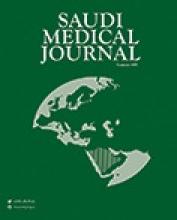Abstract
OBJECTIVE: To compare the blood lead levels of mothers and cord blood in intrauterine growth retarded (IUGR) neonates and normal term neonates.
METHODS: From April to December 2005, we carried out a cross-sectional, prospective study in Isfahan University of Medical Sciences, Isfahan, Iran. Blood lead levels were measured in the umbilical cord and maternal venous blood samples in 32 mother-infant pairs with IUGR full term neonates, and 34 mother-infant pairs with normal full term neonates. Blood-lead levels were analyzed by atomic absorption spectrometry.
RESULTS: The mean lead concentration in neonates of IUGR and normal groups was not significantly different (107.47 ± 16.75 versus 113.08 ± 19.08 micrometer/L, p=0.2). The mean lead concentration in mothers of IUGR group was lower than normal groups, but this difference was not significant (124.56 ± 19.71 versus 135.26 ± 26.91 micrometer/L, p=0.07). Maternal lead levels were strongly related with cord blood in both IUGR and normal groups (r=0.8, p<0.0001). Maternal and cord blood lead levels was not correlated with birth weight of newborns in either group. Overall, 65.6% of IUGR neonates and 76.4% of normal neonates was above the critical level defined for lead poisoning as >100 micrometer/L by the centers for disease control; however, this was not statistically different between the groups.
CONCLUSION: Our results indicate that the mean lead level was not higher in IUGR neonates, and the whole blood lead was not related to the birth weight. In addition, maternal and cord blood lead levels were strongly correlated, and there were remarkable lead burdens on both the mothers and their neonates in this industrial area.
- Copyright: © Saudi Medical Journal
This is an open-access article distributed under the terms of the Creative Commons Attribution-Noncommercial-Share Alike 3.0 Unported, which permits unrestricted use, distribution, and reproduction in any medium, provided the original work is properly cited.






